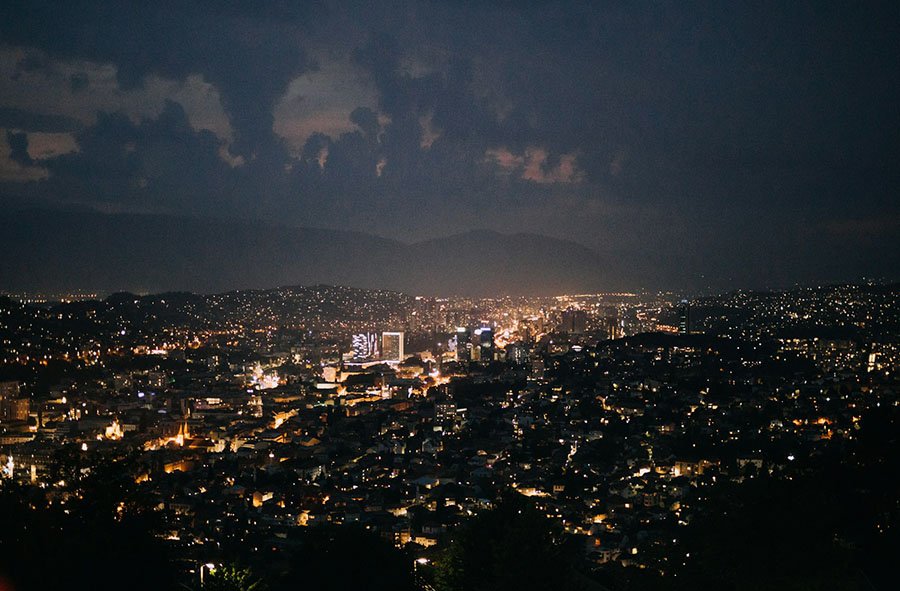читайте также
 Snow Cyclone “Francis” in Russia: Widespread Disruptions at Airports and on Roads
Snow Cyclone “Francis” in Russia: Widespread Disruptions at Airports and on Roads
 Canada tightens scrutiny at land crossings: Asylum claims show a clear decline
Canada tightens scrutiny at land crossings: Asylum claims show a clear decline
 Wealthy Americans eye New Zealand luxury homes: Ban lift reshapes the top end of the market
Wealthy Americans eye New Zealand luxury homes: Ban lift reshapes the top end of the market
 Europe Hit by Storm Goretti: Transport Disruptions and Power Outages
Europe Hit by Storm Goretti: Transport Disruptions and Power Outages
 Snow Disruptions at Brussels Airport
Snow Disruptions at Brussels Airport
 EU Pressures Bosnia Over Visa Policy Divergence
EU Pressures Bosnia Over Visa Policy Divergence
News / Reviews / Analytics / Вusiness / Migration / Tourism & hospitality / Spain / Poland / Portugal / Switzerland / Hungary / Germany / Sweden / Bulgaria / France 30.06.2025
Life and Expenses in Europe in 2025: A Complete Guide

Europe enters 2025 amid an easing cost-of-living crisis, yet the financial landscape for residents and expats remains in sharp focus. After multiple shocks – from the pandemic to war-induced energy turmoil – 93% of Europeans report concern about rising living costs. Inflation, while cooling from its 2022 peak, still haunts household budgets. This comprehensive guide examines life and expenses across Europe’s diverse economies in 2025, comparing key countries, expense categories, salaries, and recent trends. We’ll explore how Western Europe’s affluent nations contrast with the lower-cost but fast-changing economies of Eastern Europe, the influence of inflation and migration on prices, and what it all means for relocators and investors.
European Cost of Living Overview
Europe’s cost-of-living varies dramatically by region. Generally, economically strong Western and Northern countries have far higher living expenses than Central and Eastern Europe. For example, a single person’s average monthly expenses (including rent) in wealthy Norway are about €1,125, nearly double the €606 in Bulgaria. In 2025, Germany’s total monthly outlay is around €1,880 for a single and €5,040 for a family of four. By contrast, Spain is cheaper at roughly €1,670 for a single and €4,020 for a family, and Portugal similar at ~€1,622 and €4,000, respectively. Central Europe offers even lower costs: estimates for Poland approach €1,300 for a single and €3,400 for a family (though these figures can fluctuate by city).
Hungary remains one of the most affordable, with a single person’s budget around €600–€860 per month and ~€2,700 for a family of four. Such disparities reflect both price levels and incomes. Western Europeans earn significantly more – for instance, Germany’s average net monthly salary is about €3,230, versus roughly €1,180 in Hungary. Even Portugal’s average net pay (€1,340) is nearly double Poland’s (€1,470). Minimum wages likewise span a wide range, from just €551 in Bulgaria to €2,638 in Luxembourg as of early 2025.
This East–West income gap underpins differences in living standards and purchasing power. Notably, when adjusting for local price levels (PPP), the gap narrows somewhat – poorer states often have cheaper goods and services – but a substantial divide remains. To visualize the variance, consider monthly cost-of-living indices: Germany’s index stands around 62 (with 100 being New York City’s cost), whereas Poland’s is ~41 and Hungary’s ~42. In global rankings, Poland sits 67th in cost-of-living, emphasizing its relative affordability. In summary, Western Europe offers higher salaries and generally higher costs, while Eastern Europe promises lower expenses but also lower incomes. Next, we delve into specific expense categories – housing, food, transport, utilities, healthcare, and leisure – to see how these differences play out in daily life, and how they’ve changed since 2024.
Housing: Prices, Rents and Regional Shifts
Housing is often the largest expense, and Europe’s housing market tells a story of divergent trends. Over the past decade, home prices surged almost everywhere – EU house prices climbed ~48% from 2015 to 2023 on average, with hotspots like Hungary soaring 173% (the bloc’s steepest increase). By contrast, longtime markets like Finland saw only a 5% rise. The cost of buying or renting peaked in many areas in 2022–23 amid inflation and housing shortages. In 2024, however, fortunes began to split: house prices actually fell in some Western countries (e.g. –3.7% in France, –1.6% in Germany), while double-digit growth hit parts of Eastern Europe.
Eurostat data show 2024’s biggest annual house price jumps in Bulgaria (+16.5%), Poland (+15.0%), and Hungary (+12.8%), versus declines in Luxembourg and modest drops in France and Germany. In fact, Eastern and Southern European countries dominated the top of the 2024 housing inflation rankings, while Western/Northern nations occupied the bottom. Rapid economic growth and post-pandemic demand, alongside investors seeking higher yields, have driven Eastern property values up – a boon for owners and investors, but a challenge for local buyers. For renters, similar patterns hold. Major Western capitals boast Europe’s priciest rents: a one-bedroom apartment averages an eye-watering ~€2,880 per month in London, €2,540 in Zurich, and ~€1,850 in Amsterdam. Meanwhile, Eastern cities remain far cheaper – renting a comparable one-bed runs roughly €550 in Sofia, €600 in Tallinn or Zagreb, and €649 in Budapest.
This stark east-west divide means someone paying for a small flat in London spends five times what a tenant in Bulgaria’s capital might pay. Mid-tier Western European cities are also expensive: in mid-2025, Munich’s average single-person expenses (with rent) hit €2,550 – the highest in Germany – followed by Frankfurt (€2,290) and Berlin (€2,180). In contrast, cheaper German cities like Halle or Magdeburg only cost ~€1,130–1,180 for a single’s monthly needs, illustrating how living outside prime urban centers can drastically cut housing costs. Average monthly rent for a one-room apartment in selected European cities (in euros). Western capitals like London command extreme rents, while Eastern European cities offer more affordable housing. Housing costs have also been heavily impacted by migration and demographic shifts. In cities like Lisbon, a surge of foreign digital nomads and expats drove rents up 17% in 2023 alone, pushing the average one-bedroom to ~€1,200. An influx of higher-earning remote workers (Portugal’s special visa requires €3,280 monthly income, about double the local average wage) intensified competition for rentals. Portugal’s house prices have doubled since 2018, fueling a housing affordability crisis. In response, the government enacted rent controls (capping annual increases at 2%) and curtailed short-term rentals and tax incentives that had attracted foreigners.
Eastern Europe has experienced the opposite dynamic: significant emigration over the years often kept demand subdued, but the sudden inflow of war refugees in 2022 created immediate housing shocks. Poland, which took in millions of Ukrainians, saw apartment rents spike – in March–April 2022, Warsaw’s rents jumped ~14% and Kraków’s ~16.5% in just weeks as populations swelled by 15–20% virtually overnight. While those acute surges stabilized, the episode underscored how quickly demand shocks can upend housing markets. By 2025, Poland’s rental growth has cooled, but the country still recorded the EU’s fastest house price rise in early 2024 (18% year-on-year), partly reflecting catch-up from past undersupply. On average, housing remains markedly cheaper east of the EU’s former Iron Curtain.
As of 2025, renting a central 1-bedroom apartment costs ~€800–€900 in many Eastern capitals (Warsaw, Budapest), compared to €1,300–€1,800 in Western hubs like Madrid or Paris. Utilities add to the picture: energy costs spiked continent-wide in 2022, but even here differences emerged. Electricity prices in 2024 ranged from €0.39 per kWh in Germany (Europe’s highest) to just €0.11 in Hungary (the lowest), thanks to subsidies and energy mixes. For an 85m² flat, basic utilities (power, heat, water) run about €300/month in Germany, but substantially less in many Eastern states (often €100–€200). Hungary’s government even capped retail gas and power prices for consumers during the energy crisis, easing the strain on Hungarian households. Overall, housing and utility expenses claim a larger share of income in lower-wage Eastern Europe, yet in absolute terms remain below Western levels. For instance, rent constitutes roughly 25–30% of a household’s expenses in Poland, similar to richer countries – but since incomes are lower, many Eastern Europeans still spend a higher portion of earnings on essentials like housing. Investors note that fast-rising rents and prices in the East signal opportunities (higher yield potential), even as governments grow cautious of overheating. Western Europe’s property markets in 2025 are more mature and cooling – offering stability but lower growth.
Food and Groceries
Food prices across Europe also vary widely, though inflation hit everyone’s grocery bills in recent years. Generally, eating and drinking out is pricier in the northwest of Europe. A simple restaurant dinner for two costs around €65 in Berlin, versus €50 in Bucharest. Coffee in Copenhagen or Paris might be €4–5, while in Portugal it’s closer to €1.50. Supermarket staples show similar gaps: a kilogram of apples goes for about €2.88 in high-cost Stockholm, compared to €1.90 in Athens and under €0.90 in Poland. Meat, dairy and bread are cheapest in Eastern Europe’s breadbaskets – Eurostat data show Romania has the EU’s lowest prices for bread and fish, Slovakia the cheapest meat, whereas wealthy Switzerland endures the highest prices for those categories.
In practical terms, a loaf of bread in Germany might be €1.50–3, but in Bulgaria it can be under €1. Local diets and VAT differences play a role too: countries like Poland zero-rated basic food VAT in 2022–23 to fight inflation, temporarily softening price rises. By 2025, food inflation is finally moderating. It was a major pain point in 2022, with many Eastern EU members seeing grocery prices jump 15–25% year-on-year. Now, though still elevated, food price growth is slowing. Shoppers in the Baltics or Hungary who faced 20% food inflation in 2022 have some relief as 2024 brought single-digit food inflation. Yet the price level differences persist: a mid-range restaurant meal (no wine) averages €12–€20 in Spain or Italy, but can be €8 or less in much of Poland or Serbia. Even within countries, urban centers cost more – e.g. in Prague or Warsaw one might pay 20–30% above the national average for dining out.
The good news: in most of Europe, grocery items remain relatively affordable as a share of income thanks to extensive domestic agriculture and EU farm subsidies keeping staples cheap. However, higher-end or imported foods show greater divergence. A bottle of mid-range local wine might cost €6 in Germany, but good luck finding anything under €10–15 in Norway due to taxes. In 2025, dinner for two with wine in a Paris bistro can easily top €100, while the equivalent in Lisbon might be €60. These gaps influence lifestyle: expats from London or Zurich often remark how dining out in Warsaw or Budapest feels “bargain” cheap, while Eastern Europeans visiting Western Europe are struck by the relative expense of everyday groceries and cafe culture. Still, as wages rise in the East, domestic demand for eating out is growing – one reason chains and restaurants are expanding there, slowly narrowing the gap in price and lifestyle.
Transportation
Transportation costs highlight another facet of Europe’s cost spectrum. Car ownership is priciest in countries like Denmark (due to high vehicle taxes) and cheapest in places like Poland. Fuel prices, often a unifying pain point, are ironically more uniform: by mid-2025, petrol/gasoline hovers around €1.60–1.80 per liter in most EU countries (with outliers like inexpensive Russia-impacted Hungary or expensive Netherlands). A gallon of gasoline in Germany is about €6.65 (≈€1.76/L), not far off the EU average. Public transport, however, shows extremes. A monthly city transit pass costs as much as €115 in Dublin or €90 in London, but under €15 in cities like Bucharest. Many Eastern European cities heavily subsidize transit – for instance, Romania’s capital charges roughly €13 per month for unlimited rides, a fraction of what Westerners pay. Some smaller cities (e.g. in Luxembourg, Estonia) even offer free public transport. In 2025, with fuel costs high, there’s renewed push for trains and buses: the EU’s green agenda and inflation have led to creative measures like Germany’s “Deutschlandticket” offering nationwide transit for €49/month to ease mobility costs. Meanwhile, Eastern nations keep local fares low to ensure affordability. For example, Hungary’s Budapest charges about €22 for a full-price monthly pass (or ~€8.50 for students).
Such differences can influence daily routines – a commuter in Spain or Italy might think nothing of paying €50–€60 monthly for transit, whereas in Ukraine or Turkey local transit might be just €10 a month. Taxis and ride-shares similarly vary: a 5-km taxi ride might cost €3–5 in Prague, but €15 in Stockholm. One notable divide is car usage: higher incomes and suburban lifestyles in Western Europe mean more cars per capita, but also higher costs in fuel, insurance and parking. Eastern Europe’s lower incomes mean fewer cars per household (outside of Poland), yet congested cities like Bucharest suffer from cheap second-hand car imports and subsidized fuel leading to traffic jams. Governments are responding by investing in rail – cross-border train travel is getting a boost (e.g. new night train routes), potentially saving travelers money versus flying. In short, transportation in Western Europe can significantly impact budgets, whereas in Eastern Europe it remains relatively affordable, often under 10% of monthly expenses. This contributes to Eastern Europe’s allure for digital nomads and retirees: you can get around for less without needing a car.
Healthcare and Medical Costs
Europe is known for its generally accessible healthcare, but systems differ in funding – and thus in out-of-pocket costs. In broad strokes, most European countries provide universal healthcare, largely free or low-cost at point of service. Tax-funded national health systems (like the UK, Spain, Italy) charge negligible fees for doctor visits or surgeries. For instance, Sweden covers 97% of medical costs via taxes; patients pay at most 1,000 SEK (€90) per year out-of-pocket, plus up to ~€210 for prescriptions before subsidies kick in.
Similarly, Germany and France use insurance-based systems with substantial government regulation – payroll deductions (around 7% of salary in e.g. Belgium) cover mandatory health insurance premiums. In Belgium, a worker earning €3,500 gross pays roughly €124/month for health coverage via payroll tax, and just €6 co-pay per GP visit.
Such setups keep Europeans’ medical expenses modest compared to, say, the United States. That said, there are differences. Countries like the Netherlands require residents to purchase private health insurance (regulated basic plans). The average Dutch basic premium in 2025 reached €149 per month, up from €138 in 2024 – a notable jump, yet Dutch insurers cover the majority of care with that premium. In contrast, countries in Eastern Europe often have public systems with even lower nominal fees, though sometimes with longer wait times or fewer resources. For example, Poland’s public clinics charge nothing for insured patients, but many Poles use private clinics for speed, at costs still relatively low (a private GP visit might be €20–€30). Private health insurance in Europe is surprisingly affordable as a supplement – monthly plans start at around €30 on average, making it feasible for many expats or locals to carry extra coverage for faster access. Overall, healthcare spending is a smaller share of household expenditure in Europe than in the U.S., reflecting these universal models.
According to WHO and Eurostat, direct out-of-pocket payments remain under 10% of total health spending in many countries (e.g. <10% in France, Luxembourg, Croatia), meaning most costs are borne by insurance or state. However, Southern and Eastern Europe see somewhat higher out-of-pocket shares for medicines and private services – for instance, people in Hungary or Poland might pay more for medications if public reimbursement lists lag. Notably, inflation affected health costs too: in 2023–24, countries saw rising expenses for pharmaceuticals and clinic utilities. Yet governments largely shielded patients – many froze drug co-pays or increased health budgets.
By 2025, healthcare price inflation is moderate. One can expect to pay similar nominal amounts as in 2024: e.g. around €80–€120 per month for comprehensive private insurance in expat-friendly markets like Portugal or Spain, or just the standard public contributions elsewhere. From an expat’s perspective, quality of care is high across Europe and medical bills are seldom a financial shock – a sharp contrast to the U.S. It’s worth noting for retirees or those considering relocation: countries like Spain, Portugal, and France are famed for excellent healthcare at low cost, bolstering their popularity. A retired couple in Portugal might spend under €200/year out-of-pocket thanks to the public system, whereas that same couple in the U.S. would budget far more for Medicare gaps. Eastern Europe’s healthcare, while universal, can be uneven in quality – urban hospitals are decent, rural care may be spottier.
Yet even there, private options are available and inexpensive by Western standards. Many Europeans thus mix public and private healthcare (seeing a private dentist, but using public hospitals for major surgery, for example). In sum, health costs in Europe 2025 remain largely predictable and affordable, with insurance premiums and minor co-pays constituting the main expenses, and no one is denied care for inability to pay.
Leisure and Lifestyle
Leisure activities – from entertainment to travel – also show cost differentials, though perhaps smaller than housing or food. Going to the movies, for instance, ranges from about €7–€8 a ticket in Portugal or Slovakia, up to €15–€21 in Switzerland. A fitness club membership might be €20–€40 monthly in much of Europe; the same could be €60 in high-cost cities like Oslo or Dublin.
In 2025, Europeans are budgeting carefully for non-essentials after the squeeze of recent years, but leisure spending is rebounding as economies grow. Tourism and travel inside Europe remain relatively cheap by global standards due to abundant budget airlines and extensive train networks – a weekend trip from Poland to Italy can cost only a few hundred euros all in. However, within-country recreation costs mirror local price levels: a night out in Prague might run half the cost of one in Paris. Cultural and sporting events similarly vary. Football (soccer) match tickets in Germany or England can be €40–€100 for top teams; in Poland or Hungary they might be €10–€20. Museums often charge foreigners more in some Eastern countries (still just €5–€10), whereas national museums in the UK are famously free. Drinking and smoking are notably cheaper in the East – a domestic beer is ~€1–€2 in a Polish pub, versus €4–€5 in a French cafe.
Such differences sometimes spur cross-border nightlife tourism (e.g. stag parties flocking to Riga or Kraków for the low prices). On the flip side, luxury goods and high-end dining cost roughly the same or even more in Eastern capitals now, as global pricing evens out at the top end. A key trend in 2025 is inflation’s impact on lifestyle differentiation: while necessities strained budgets in 2022–23, many Europeans cut back on discretionary spending. With inflation receding, consumer confidence is returning slowly.
By mid-2025, wages in many countries are finally outpacing inflation, restoring some purchasing power for leisure. For example, Hungary’s average salary rose ~15% in 2023–24 amid 25% inflation, and is forecast to rise further, giving consumers a bit more to spend as inflation falls to single digits.
Eastern Europe’s younger populations and rising middle class are driving growth in sectors like e-commerce, fitness, and entertainment. Western Europe, with an aging demographic, sees robust spending on travel and wellness by retirees. One cannot ignore the East-West migration’s effect on lifestyle: millions of Eastern Europeans work in richer countries and send money home (remittances), which often funds local leisure or investment. Meanwhile, Western Europeans relocating to cheaper locales (be it remote workers or pensioners) bring their spending habits, sometimes gentrifying parts of cities like Lisbon, Prague or Tallinn – which can push local prices up for restaurants and cafes. Authorities in popular destinations are balancing welcoming foreign spending with protecting local affordability (as Portugal’s recent measures against rampant short-term rentals showed).
In summary, Europe in 2025 still offers a spectrum of lifestyles: one can live frugally in a charming Bulgarian town on a small budget, or burn through a high salary in Geneva. But wherever you go, basic needs are generally met without extreme hardship, thanks to social safety nets, and many pleasures – an espresso, a museum visit, a train to the beach – remain within reach. Europe’s quality of life rankings stay high, even if the “cost” of that life diverges between East and West.
2024 vs 2025: Trends and Outlook
Comparing 2025 to 2024, several trends emerge. Inflation, the dominant story of 2022–2023, has notably cooled. Eurozone inflation fell to around 5.5% in 2024 and is projected ~2.9% in 2025, nearing the ECB’s target. Eastern Europe’s inflation, while higher, is also dropping – from extreme highs like 25.6% in Hungary in 2022 down to mid-single digits by 2025 (Poland ~4.7% forecast).
This disinflation means that although prices are higher now than in 2024, the pace of increase is slowing, easing pressure on households. Some countries even saw price corrections: as noted, real estate cooled in parts of Western Europe in 2024, and energy prices came down from their peaks, translating into lower utility bills in late 2024 versus early 2023.
Governments across Europe implemented policies to tame the cost-of-living crisis – from tax cuts on fuel and food to caps on rent and energy – many of which remain in effect in 2025. These interventions helped Europe avert a deeper social crisis and are gradually being phased out as inflation normalizes. Wages have risen nearly everywhere from 2024 to 2025, partially catching up with past inflation. Many European workers secured significant pay hikes or one-off bonuses in late 2022–2024. For instance, Germany’s labor unions negotiated 5-8% annual raises in key industries; Spain boosted public sector pay; Poland hiked its minimum wage by a whopping 20+% in 2023–24.
The result is that real incomes (adjusted for inflation) are starting to recover or even exceed pre-crisis levels in a number of countries. This bodes well for consumer spending and living standards. However, disparities persist: Western Europe’s average incomes remain far higher in absolute terms, enabling more comfort despite higher costs. Eastern Europeans, while seeing faster wage growth, still often contend with tighter budgets day-to-day. The cost-of-living convergence is a slow process – one can expect Eastern prices to keep rising faster than Western ones as their economies grow (as seen in housing), but likewise their salaries are playing catch-up. The gap in living standards between say, Germany and Romania, though a bit narrower than a decade ago, is still substantial. Migration continues to shape these dynamics. Western Europe’s tight labor markets (partly due to aging populations) attract Central and Eastern European workers, which helps moderate wage inflation in the East but alleviates skill shortages in the West.
In 2024–25, net migration into countries like Germany, Spain, and Ireland remains high – not only from Eastern EU but globally – supporting their economies and housing demand. Conversely, some Eastern countries face depopulation, which long-term can reduce growth and property demand there. A notable trend is also intra-EU remote work: professionals from high-cost countries are moving to lower-cost EU locales while keeping their high salaries, effectively arbitraging living costs. For example, a French software engineer might live in Portugal or Poland, enjoying a lower expense base – this contributes to local price increases but also knowledge transfer.
Investment Perspective
For those evaluating Europe in 2025 for relocation or investment, the landscape presents both challenges and opportunities. Western Europe offers stability, strong infrastructure, and high wages, but at the price of higher expenses and smaller growth in asset values. Eastern Europe offers lower costs and often higher growth potential (in real estate, emerging markets), but also more volatility and lower current incomes. Inflation’s retreat means central banks are ending rate hikes, which could soften record-high mortgage rates – potentially a relief for housing markets and borrowers in 2025. For investors, this environment favors selectively re-entering property markets that cooled in 2024 (e.g. Germany’s slight house price dip) and capitalizing on Eastern Europe’s structural convergence (where rising local purchasing power could fuel returns in retail and housing).
Conclusion
By mid-2025, Europe stands at an interesting juncture: the acute cost-of-living crisis of the early 2020s is waning, yet its lessons remain etched in household budgets. Europeans have become savvy at navigating expenses – from swapping brands at the supermarket to insulating homes against energy costs – and many emergency government supports (energy price caps, transit discounts) persist in some form. The continent remains a mosaic of living standards: a family in Munich or Oslo lives a materially different financial life than one in rural Hungary or coastal Portugal.
Still, quality of life across Europe is broadly high, underpinned by public services and community resilience. For the broad audience reading this guide – prospective expats, investors, or the merely curious – the key takeaway is that Europe offers a wide range of living experiences to fit different budgets and goals. One can find both the world’s most expensive cities and some of its best-value locales within the same union. Eastern and Western Europe each have their draws: the former’s lower costs and dynamic growth, the latter’s higher incomes and developed markets. Inflation and migration will continue to influence both, knitting the EU closer in some ways and exposing fractures in others (such as housing affordability). But as of 2025, the trajectory is cautiously positive: inflation is back under control, wages are catching up, and life is regaining a sense of normalcy post-crisis. Europeans are once again planning moves, careers, and retirements with more certainty about their expenses. In the words of European Parliament President Roberta Metsola, now is the time “to bring our bills under control, push back inflation and make our economies grow”.
This guide has provided a data-driven tour of life and expenses across Europe in that context. Whether you’re contemplating a move from Madrid to Budapest, comparing investment prospects in Warsaw vs. Lisbon, or simply benchmarking your home country, we hope these facts and figures help inform your decisions and perspectives on Europe’s economic landscape in 2025.
Подсказки: Europe, Cost of Living, 2025, Inflation, Salaries, Housing, Expenses, Eastern Europe, Western Europe, Migration





